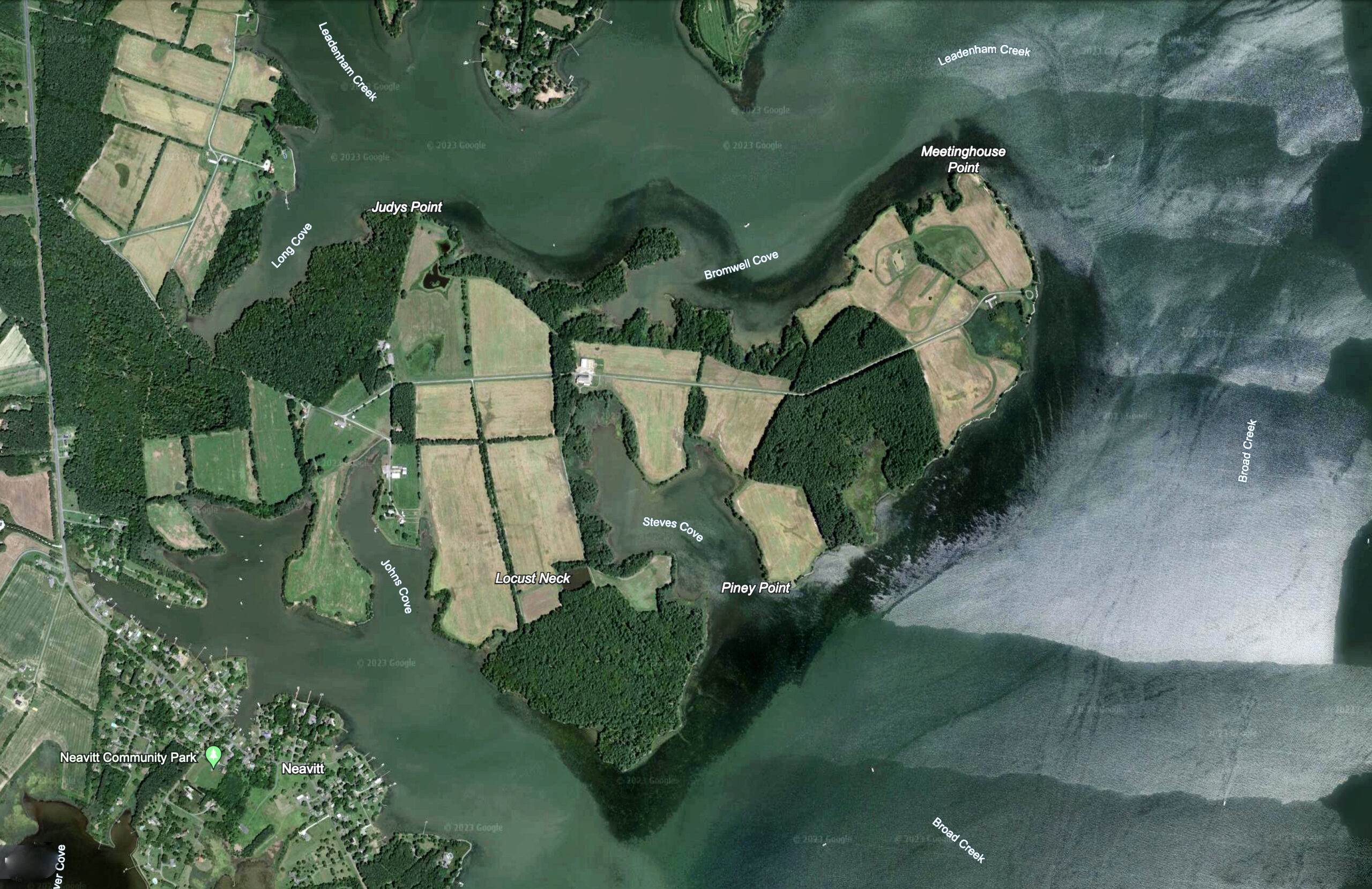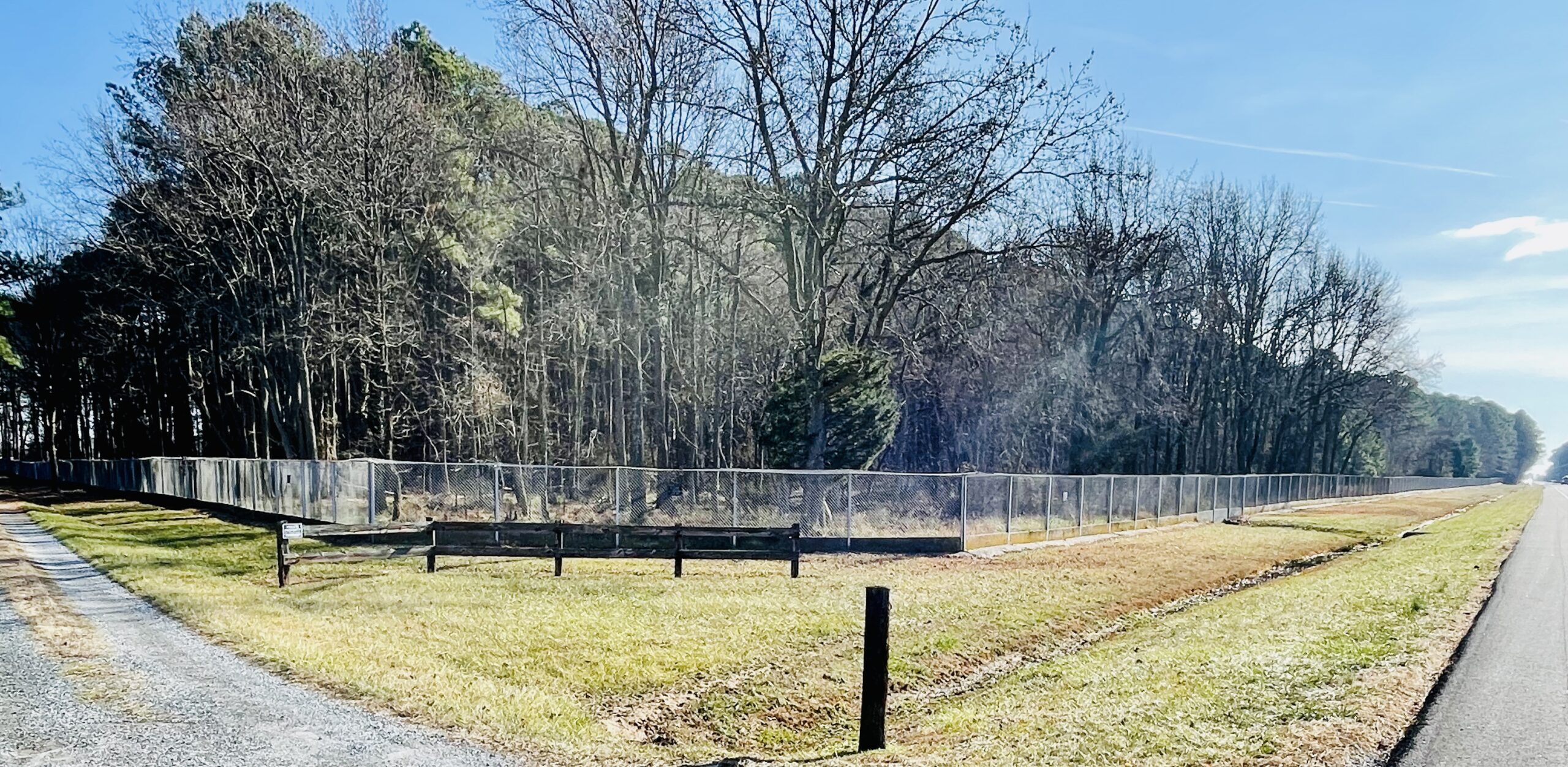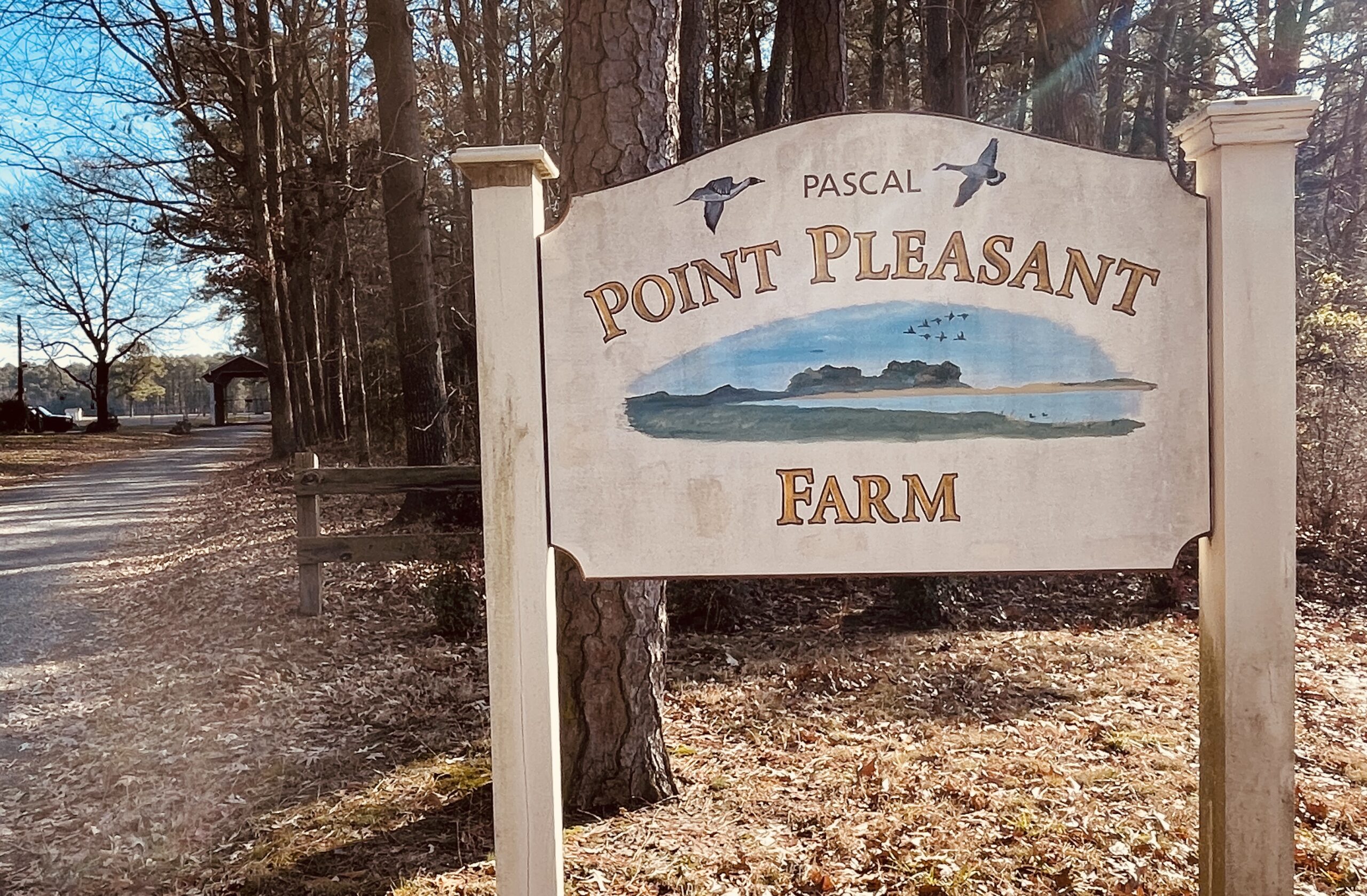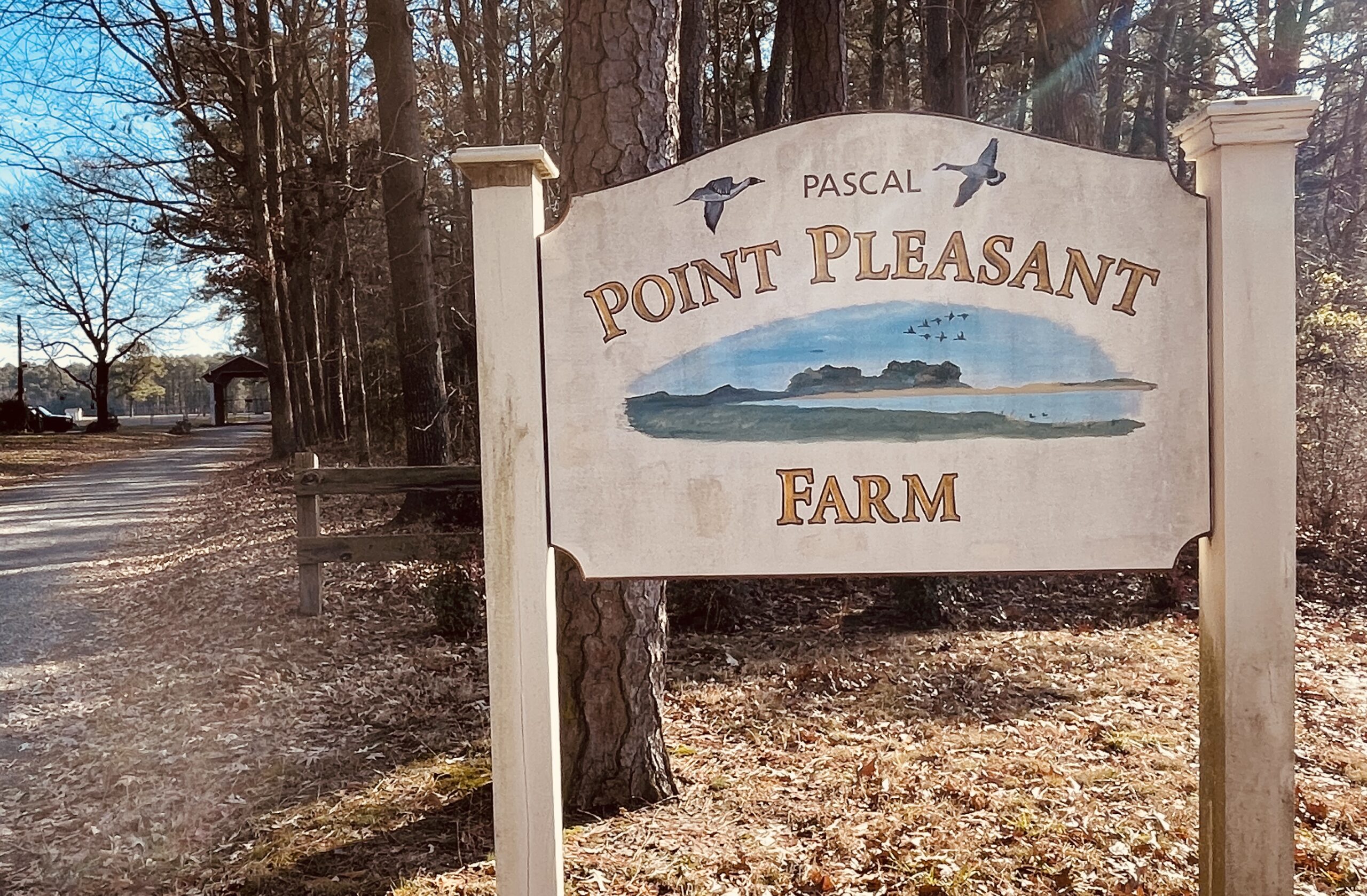A unique neck of Talbot County land with an interesting history could become a key to restoring wild bobwhite quail populations in Maryland and beyond.
In the process, the nearly 1,000-acre Point Pleasant Farm could also become a haven for other bird, insect and wildlife species important to a healthy natural environment.
University of Maryland and the Point Pleasant Foundation recently signed a five-year memorandum of understanding that will enable researchers in the University’s Department of Agriculture and Natural Resources to create a natural habitat on the farm ideal for propagating and sustaining wild quail populations. If successful, some of the birds from those populations could be captured and relocated to other areas in Maryland where compatible habitat is available to help reverse declining numbers.
Pen-raised quail are sometimes thought of as a solution to repopulating an area, but accustomed to gathering their food out of a trough, they lack the skills that nature and nurture instill for survival in the wild.
Dr. Luke Macaulay is a wildlife management specialist who works as a faculty member within the University’s extension service. That service aims to use research and education to assist private and public land owners with beneficial management of their land.
“Bobwhite quail are a struggling species,” said Macaulay in a recent interview. “More predators and less habitat are taking their toll. Our goal with this project is to manage the land at Point Pleasant to give quail the best chance we possibly can to allow for a self-sustaining population.”
That management could include converting farmland to the kind of successional grasslands that provide food and cover needed for quail success.
Point Pleasant Farm, with several hundred acres of tilled land, forests, wetlands, and hedgerows, and a unique history, offers a special opportunity.

This Google Earth image shows the boundaries of Point Pleasant Farm between Leadenham Creek to the north, Broad Creek to the east, Balls Creek to the south and the Bozman-Neavitt road to the west. With an estimated eight miles of shoreline, the farm includes extensive agricultural fields, forests and wetlands.
Surrounded by Leadenham, Balls and Broad creeks, between Bozman and Neavitt west of St. Michaels, Point Pleasant Farm, over the past several decades, has been owned and managed by a series of conservation- and preservation-minded individuals and organizations. Members of Delaware’s duPont family once owned the property and managed it for fox and waterfowl hunting and other outdoor activities. Its unique geographical features allowed erection of a substantial and effective concrete and chain-link fence across a narrow isthmus between Leadenham Creek and Balls Creek. Along the land’s western boundary, the fence was erected to keep foxes in and other predators out.
When interest in fox-hunting waned, but not its interest in conservation, the family donated the property to the national Audubon Society. That national organization has long dedicated itself to the welfare of birds.
According to Harry Shapiro, president of the Point Pleasant Foundation which now owns the property, the Audubon Society did little more than retain ownership through the years. In addition to fields, forests and wetlands, the property also includes a number of houses, barns and other structures long associated with what had once been a number of smaller farms, before consolidation.
“Those structures,” Shapiro said, “had basically been let go to rot, if you will, until Bob Pascal negotiated with Audubon to buy the property.”
Pascal, according to a Wikipedia article, was an American Republican politician, collegiate football player, professional Canadian football player and a propane entrepreneur who served as County Executive of Anne Arundel County, Maryland from 1975 to 1982. A Baltimore lawyer, Shapiro enjoyed a 50-year relationship with Pascal as his attorney and friend.
“Bob invested at least $800,000 in riprapping the extensive shoreline of the property as well as rebuilding barns and other structures – some for rental, others for his own use,” said Shapiro. “He basically brought the property back to what it had been during the duPont days and put it in a posture to attract waterfowl.” The Point Pleasant Farm has an estimated eight miles of shoreline.

A substantial concrete base and chain-link fence, installed by members of Delaware’s duPont family, runs along the western edge of the farm. DENNIS FORNEY PHOTOS
Pascal, in 2011, donated a conservation easement for the entire property, in return for a tax deduction, to Maryland’s Department of Natural Resources. That easement allowed Pascal, and eventually the Point Pleasant Foundation he created, to retain ownership of the property. The easement stipulates, however, that the property will be used for nothing more than what it was being used for at the time of the easement approval.
“The easement allows for renovation and replacement of existing buildings but no more,” said Shapiro. “That’s in perpetuity. Forever. The whole purpose is to restrict development and have the property remain as pristine as it has been. The buildings can be improved and rented but no new homes or anything like that can be built. Nothing can be done that is inconsistent with conservation purposes.”
Shapiro added that Pascal, on his death in 2021, bequeathed the stock of the corporation that had owned the property, along with $2.5 million for upkeep and maintenance, to the foundation.
The only other thing the easement allows for is use of the property for education and research. That’s where the University of Maryland comes into the picture.
Several months following Pascal’s death, Shapiro contacted University of Maryland officials to gauge interest in use of the property.. “After circulating the offer and details of the easement through a number of departments, they initially told me there was no interest. I was crushed. But then a few weeks later I was told that two professors had finally come forward with interest. That’s where this journey began. I started talking with Luke and his colleagues. They were so enthusiastic. That’s what I wanted from the start.”
Shapiro said he thought Pascal would applaud the new ideas around managing the farm for wild quail propagation. “I think he would be excited by this, providing habitat for quail. He hunted quail. But I think he would be excited not just for restoring appropriate habitat, but also by the idea of eventually exporting wild birds to other parts of the state or even the country for restoration.”
Dan Small coordinates Washington College’s Natural Lands Project, focusing on developing and instituting management plans in cooperation with farmers and other landowners to create beneficial habitat for wild quail and other species. He has been collaborating with Macaulay and others at University of Maryland on a management plan for Point Pleasant Farm. He further discussed the need and opportunity.
“Land managers in the south have been having success with expanding quail populations by increasing grasslands habitat. But they’re reluctant to give up their birds for relocation to areas like ours where we’re also interested in rebuilding populations. Transporting the wild birds with long airline flights and long drives also has its problems. So,” said Small, “if we can get a wild bird program going at Point Pleasant through proper management, that would be all the better.”
Macaulay noted that areas in St. Mary’s County in southern Maryland and on natural lands on Greensbury Point in Anne Arundel County, as well as the upper Eastern Shore, have some of the last remaining pockets of wild quail populations. That could be built on with more land management and introduction of relocated wild birds.
Ten months after Shapiro and the university people started talking, they signed the memorandum of understanding.
“What we are doing is consistent with Mr. Pascal’s wishes,” said Shapiro. “We’re just putting our toe in the water now instead of jumping in head first. The memorandum can be renewed beyond five years if we all agree. Whether we go with a state proposal to remove all or some of the land that is being farmed and place it into grasslands, and how we might also want to manage the forests there to benefit wildlife, as well as the economic considerations of doing that – that’s all part of the ongoing discussions.”
Shapiro noted that the conservation easement is not dependent on the public having access to the property. “Independently though, we plan to have some public access, such as for workshops like one we had in November when about 110 people gathered at the farm to hear about some of the plans being considered. There were excellent speakers and people really enjoyed it.
“The educational component of the easement will involve people coming in,” said Shapiro. “As we made decisions about the easement, we always envisioned people coming in, but not just letting it be wide open. We want people to be able to see the best practices and benefits that can develop out of research that can be done on properties like this. But the habitat is very sensitive. We have to control who comes on the property and what they do. Otherwise it could be overrun, destroyed and injured, and I don’t think anyone wants that.”
Dennis Forney has been a publisher, journalist and columnist on the Delmarva Peninsula since 1972. He writes from his home on Grace Creek in Bozman.




Trevor Lewis says
This is great to see!
DAVID LEE SONNER says
What’s the point? People’s cats that they let roam around, and the feral cats which no one does anything about will just kill them off.
Stephen Gruber says
Awesome, We need to figure this issue out. Quail should have a chance.
Ned Williams says
Feral cats, clean farming, pesticides, foxes and natural predators have decimated the quail population. With diligent management it is possible to bring back wild birds, but it won’t be easy.
As an old bird hunter, I applaud this effort.
The equation is pretty simple, but difficult to put in play: cover + feed + predator management = birds.